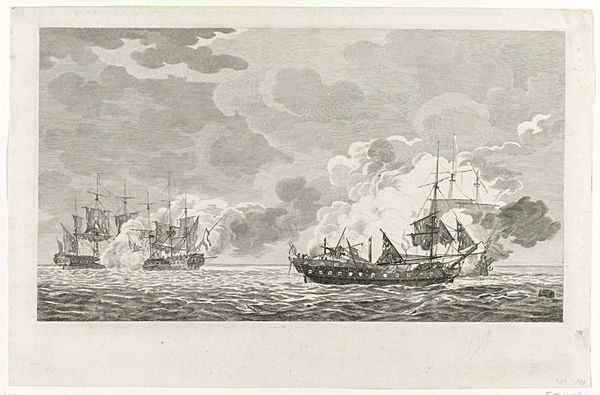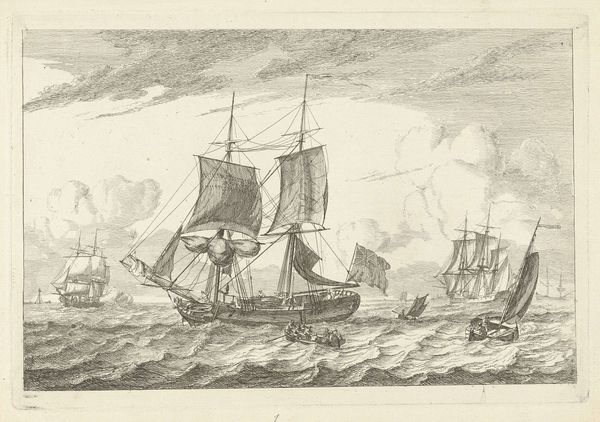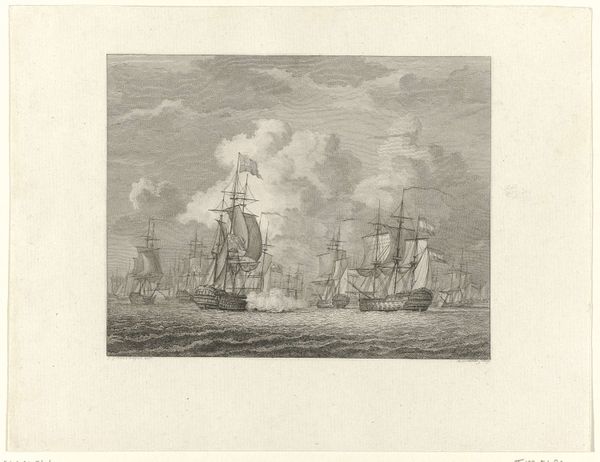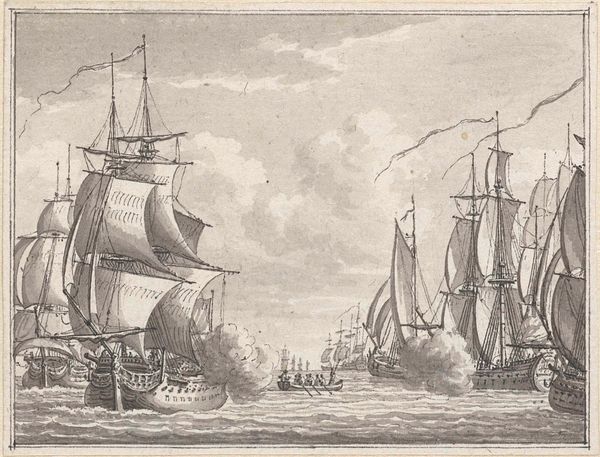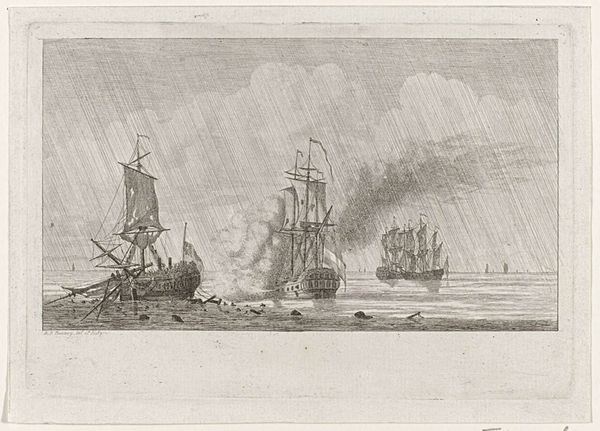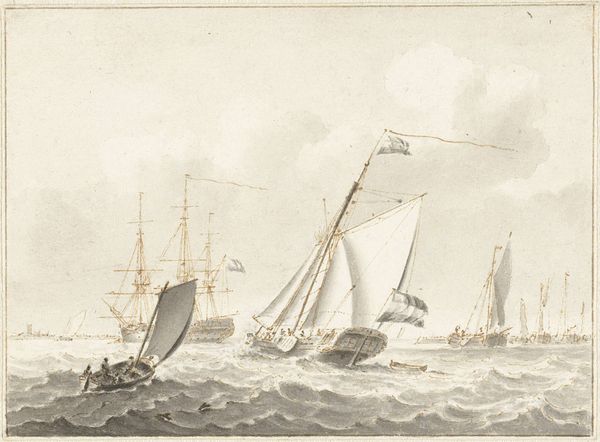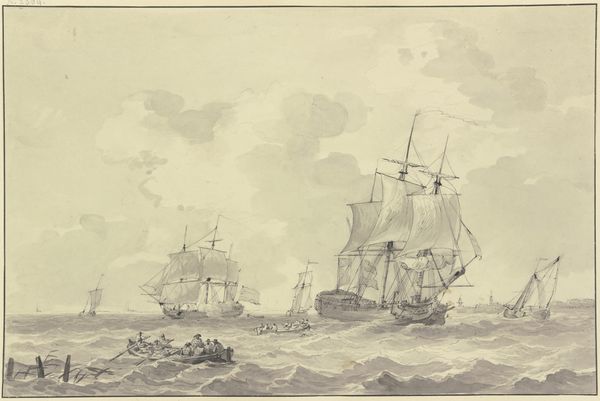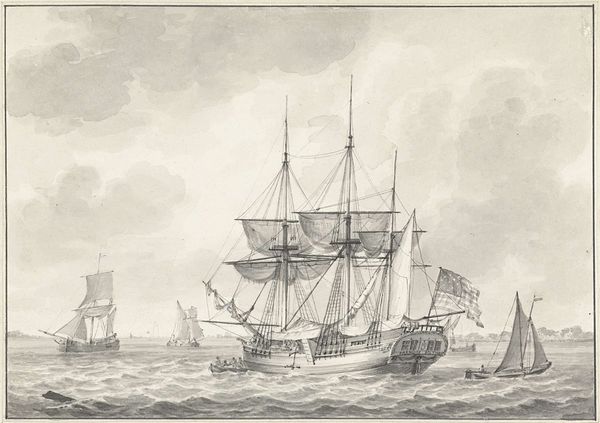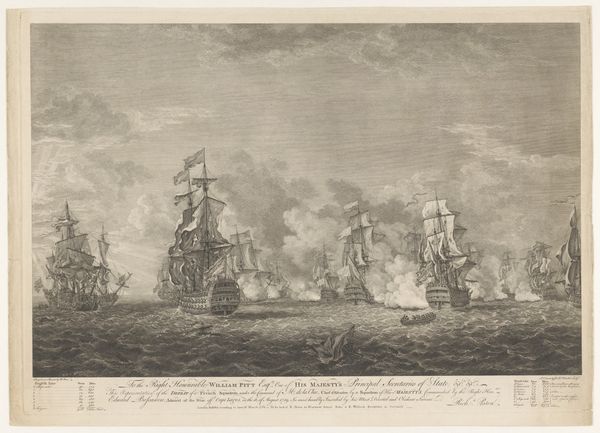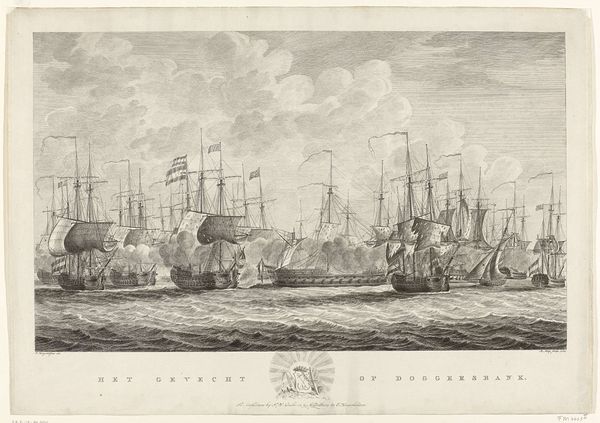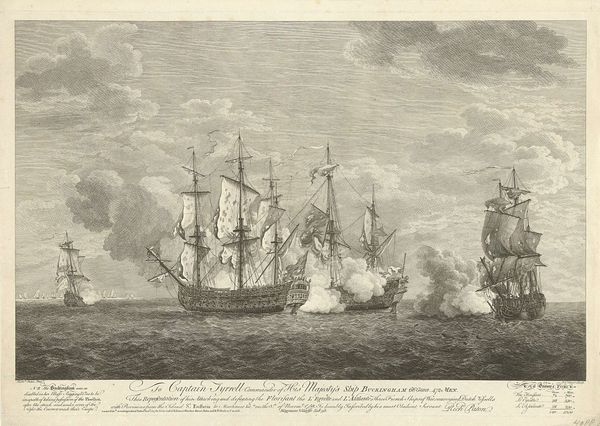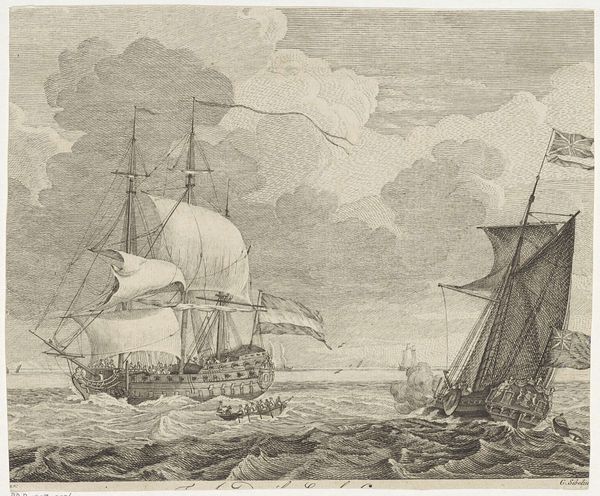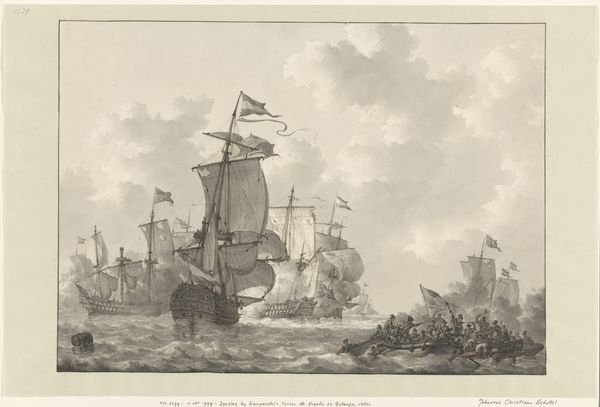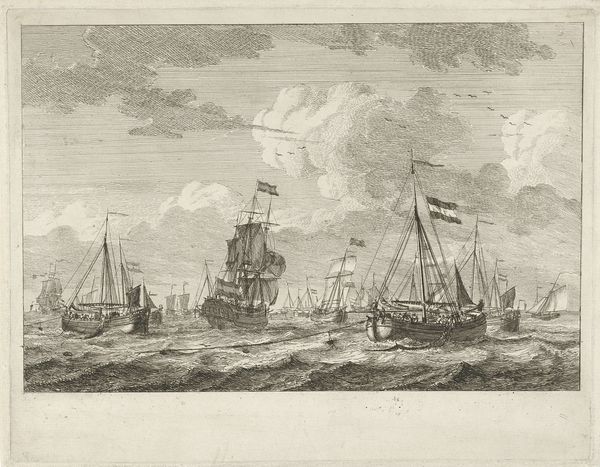
Dimensions: height 250 mm, width 338 mm
Copyright: Rijks Museum: Open Domain
Editor: This pen and ink drawing, "Zeeslag bij Cadiz, 1781," by an anonymous artist, captures a naval battle with incredible detail, even with its monochrome palette. I am intrigued by the repetitive form of each warship and how those forms convey mass production and perhaps imperial ambition. What aspects of the artwork stand out to you? Curator: It’s compelling how the artist depicts the tools of war with such meticulousness. The focus on each individual ship is critical. How were these ships constructed, with what materials, and what was the labor involved? These ships are a representation of Dutch naval power built upon international trade, enabled by exploitation, commodification, and circulation of global goods. Consider also the materiality of the drawing itself—pen, ink, paper –relatively accessible materials used to depict a system dependent on more specialized and inaccessible modes of production and global movement of resources. What statement is made by choosing a common medium to highlight the complexity of a war economy? Editor: So, it is a kind of material paradox, the simple materials contrasting with the complexity of war it depicts. It is like focusing on the means of representation versus the represented events? Curator: Precisely. This sketch reveals how art, even seemingly straightforward depictions, are tied to the intricate web of resources and power dynamics. The image suggests the commodification of violence and the far-reaching tendrils of imperialism. Editor: So, analyzing art through a materialist lens brings to light production, labor, and power structures in what appears to be just a naval battle depicted in ink. Curator: Exactly. Recognizing these connections provides a fuller appreciation for the cultural contexts intertwined with this drawing and other art from this period.
Comments
No comments
Be the first to comment and join the conversation on the ultimate creative platform.
